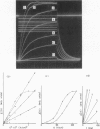Abstract
Skinned fibers of frog semitendinosus muscle could easily be stretched up to 8 mum or more in sarcomere length. Such extremely stretched fibers gave quite sharp optical diffraction patterns. The intensities of all observable diffraction lines were found to increase on application of electric field (10 similar to 100 V/cm) parallel to the fiber axis, provided that there was no overlap between thin and thick filaments. By use of a polarizing microscope, it was concluded that I-bands were mainly responsible for this intensity increase. By application of square pulses, the time course of the intensity increase and decay was followed. The analysis based on a simple model suggests: (a) Each thin filament has a permanent dipole movement and the movement directs from Z-bands to the free end of the thin filament. (b) The flexural rigidity of thin filaments is estimated to be similar to 3 with 10-17 dyn with cm-2. The present fibers will provide various applications in physiochemical studies of in vivo thin and thick filaments.
Full text
PDF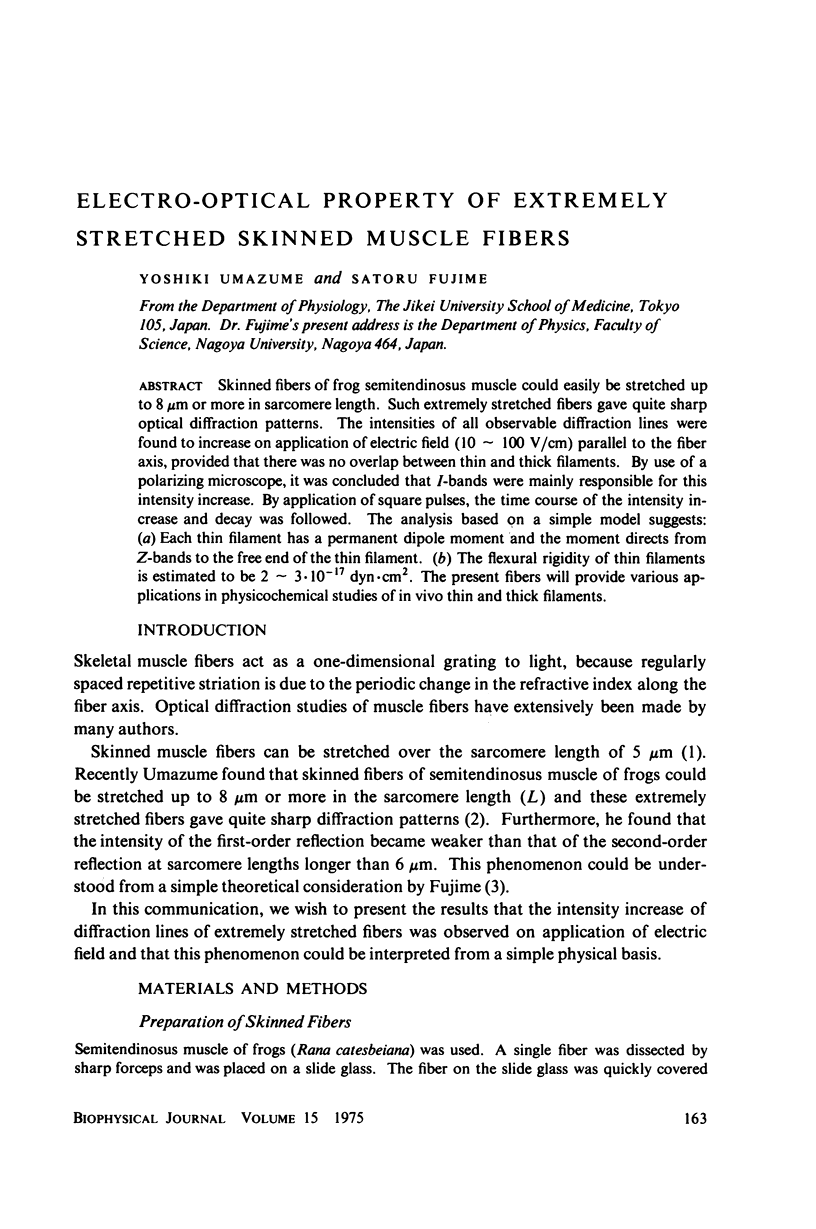
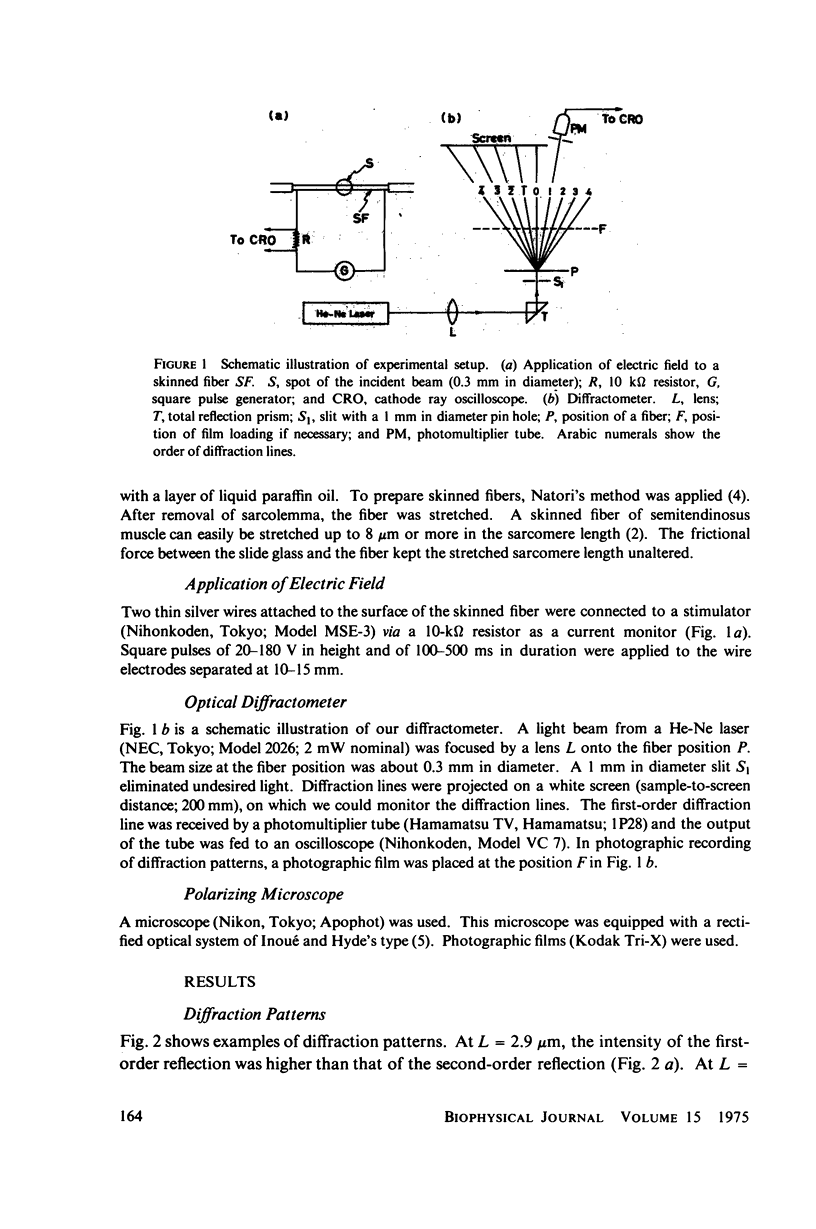
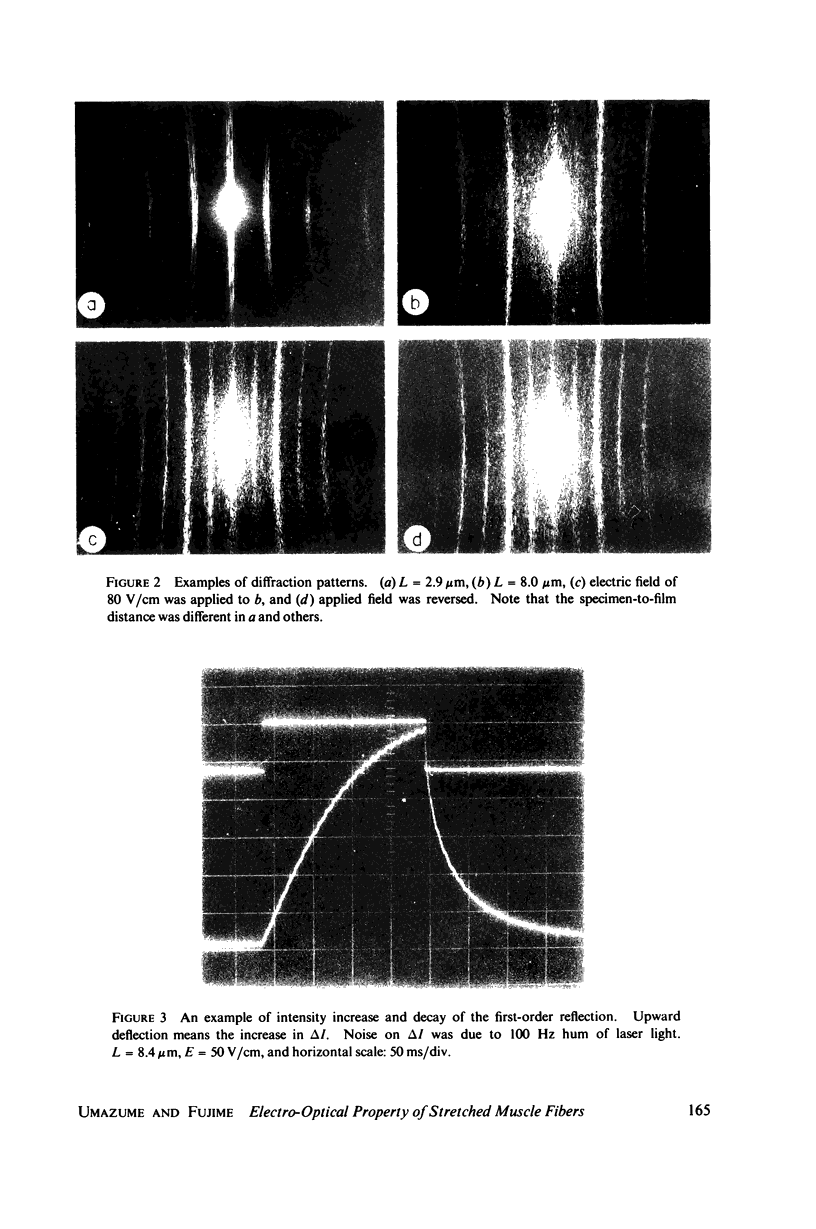
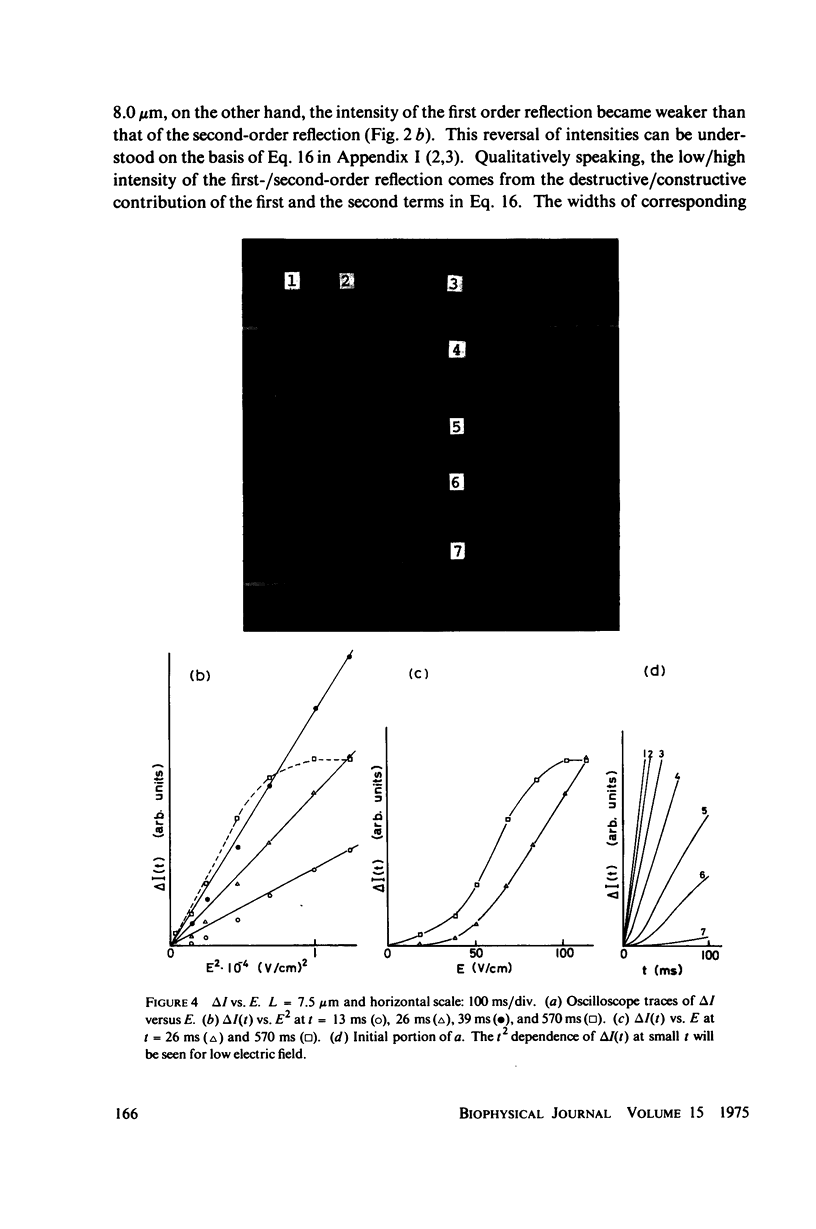
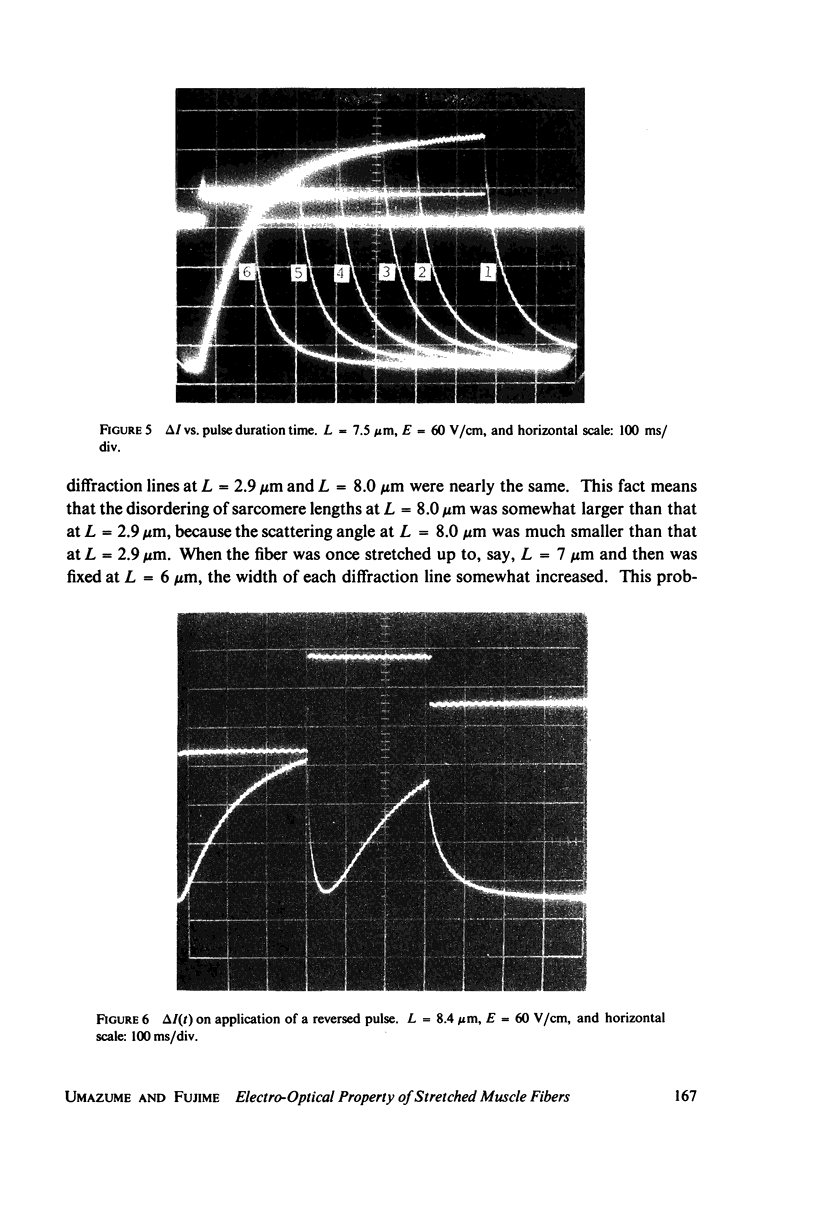
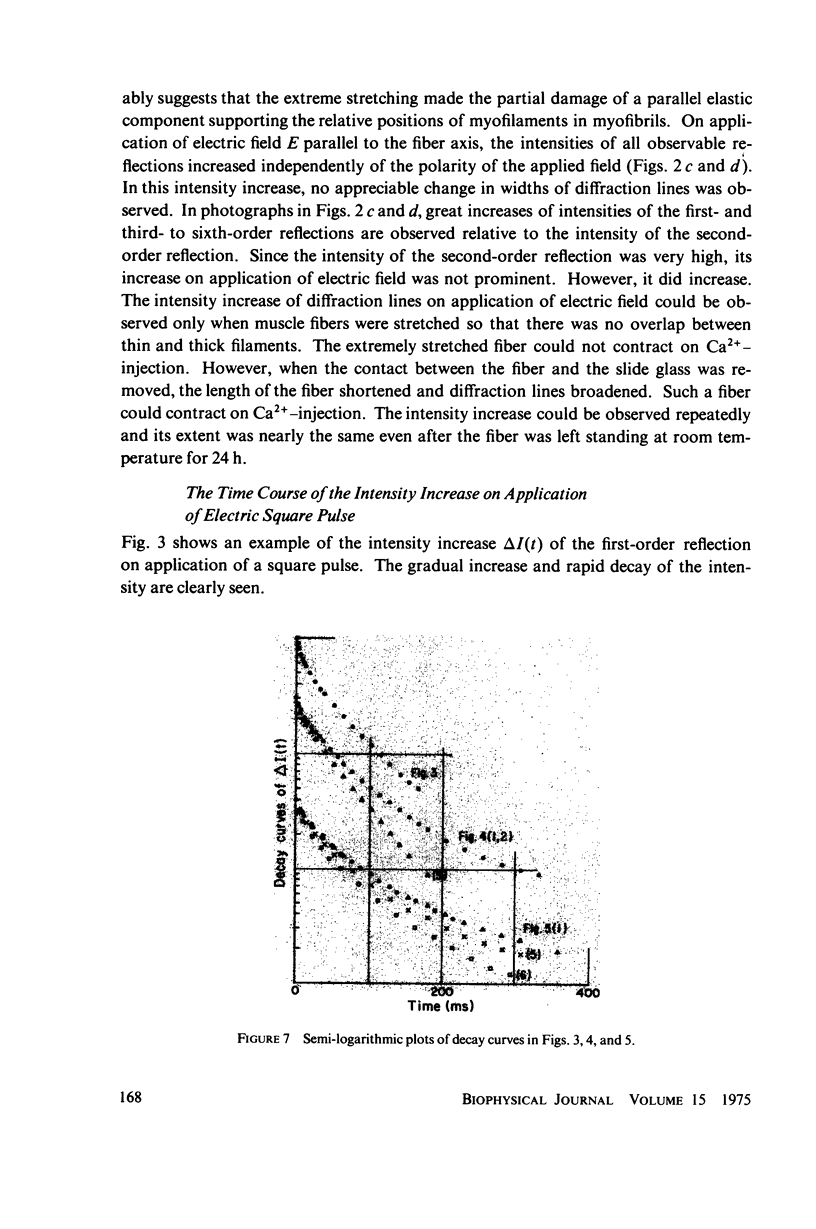
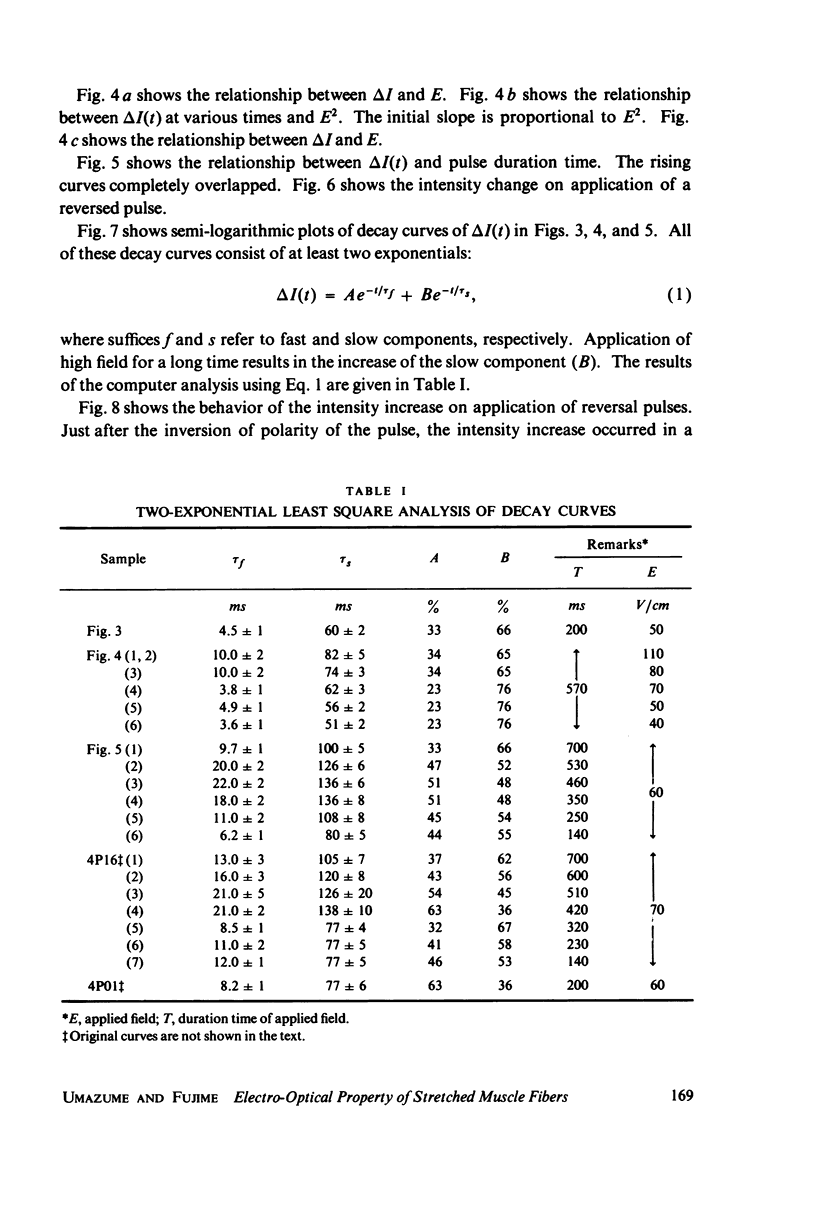
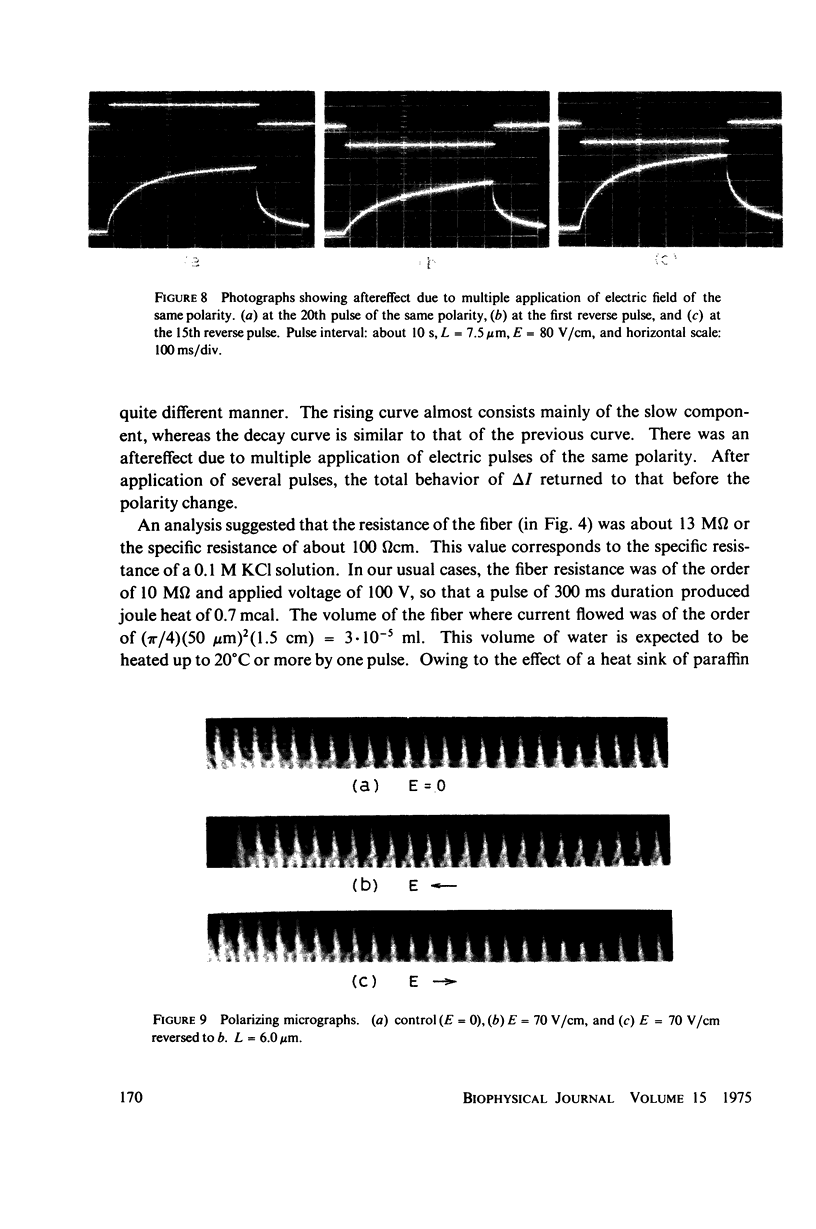
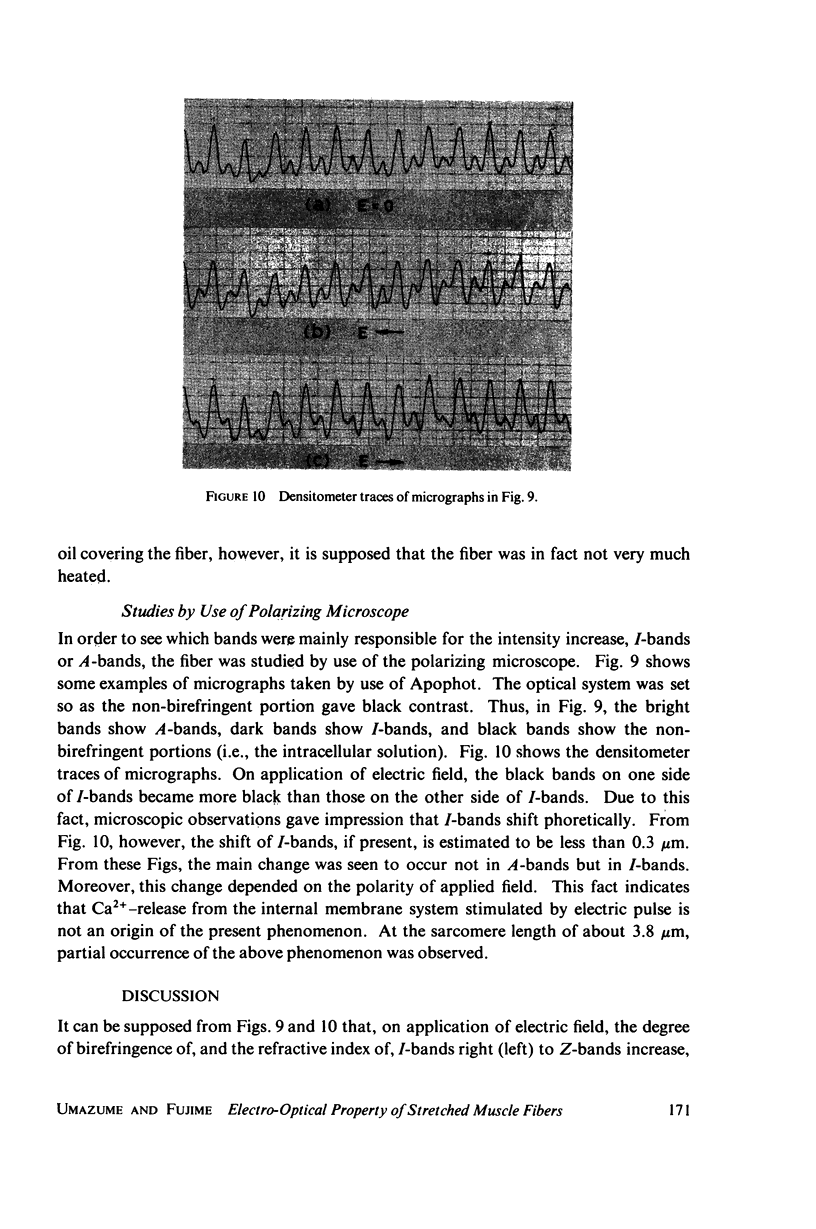
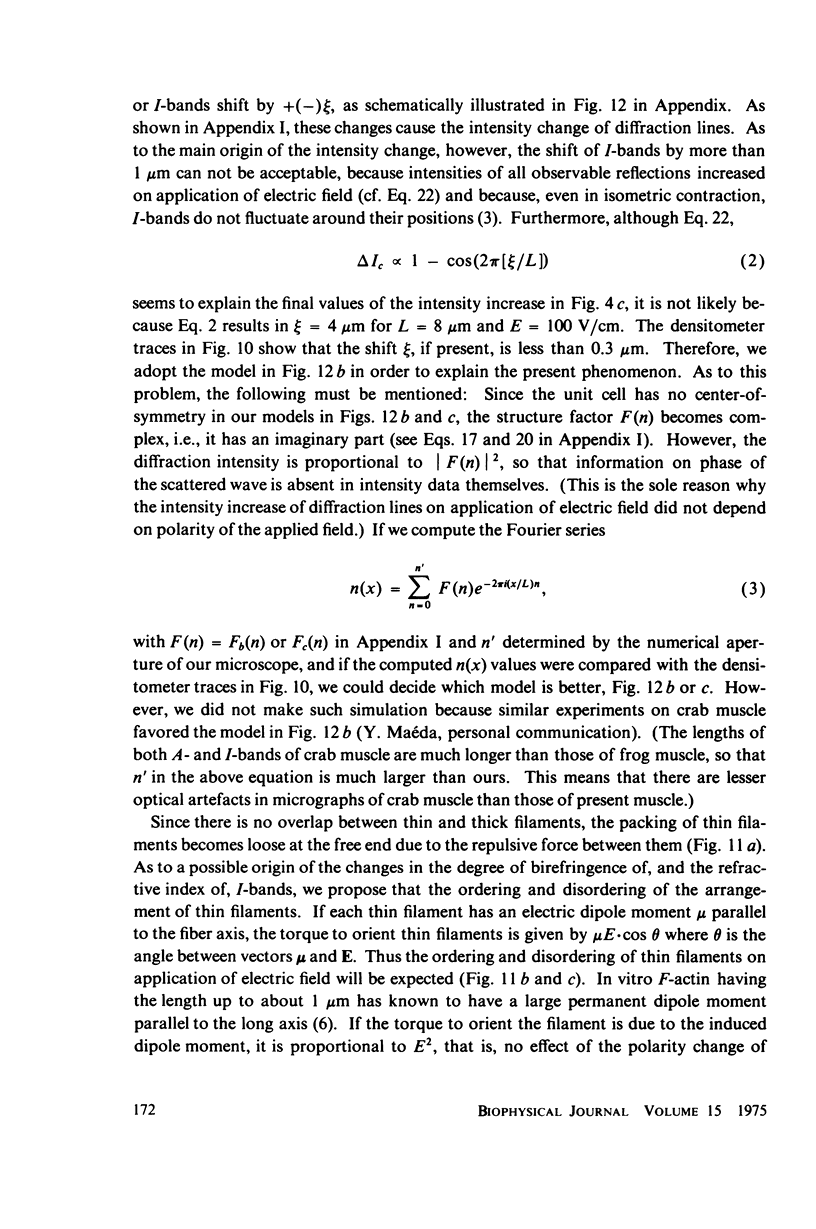
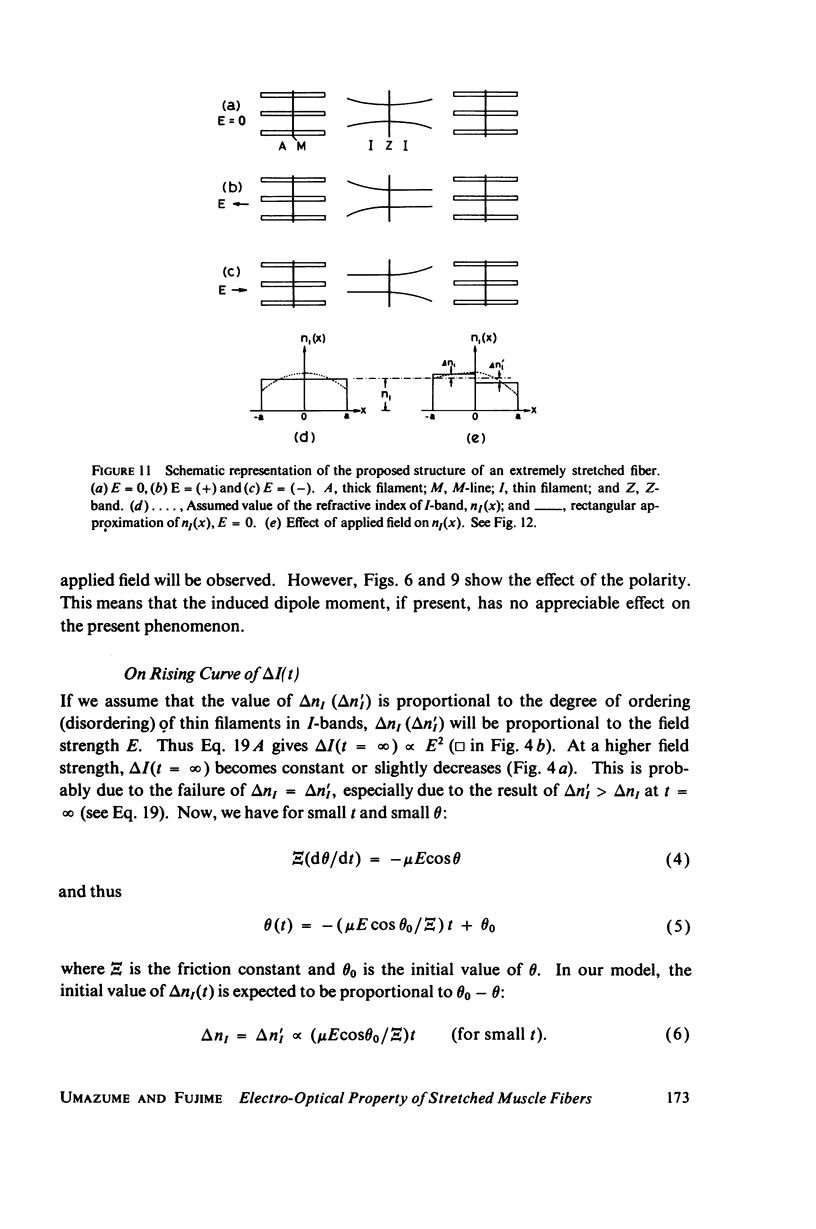

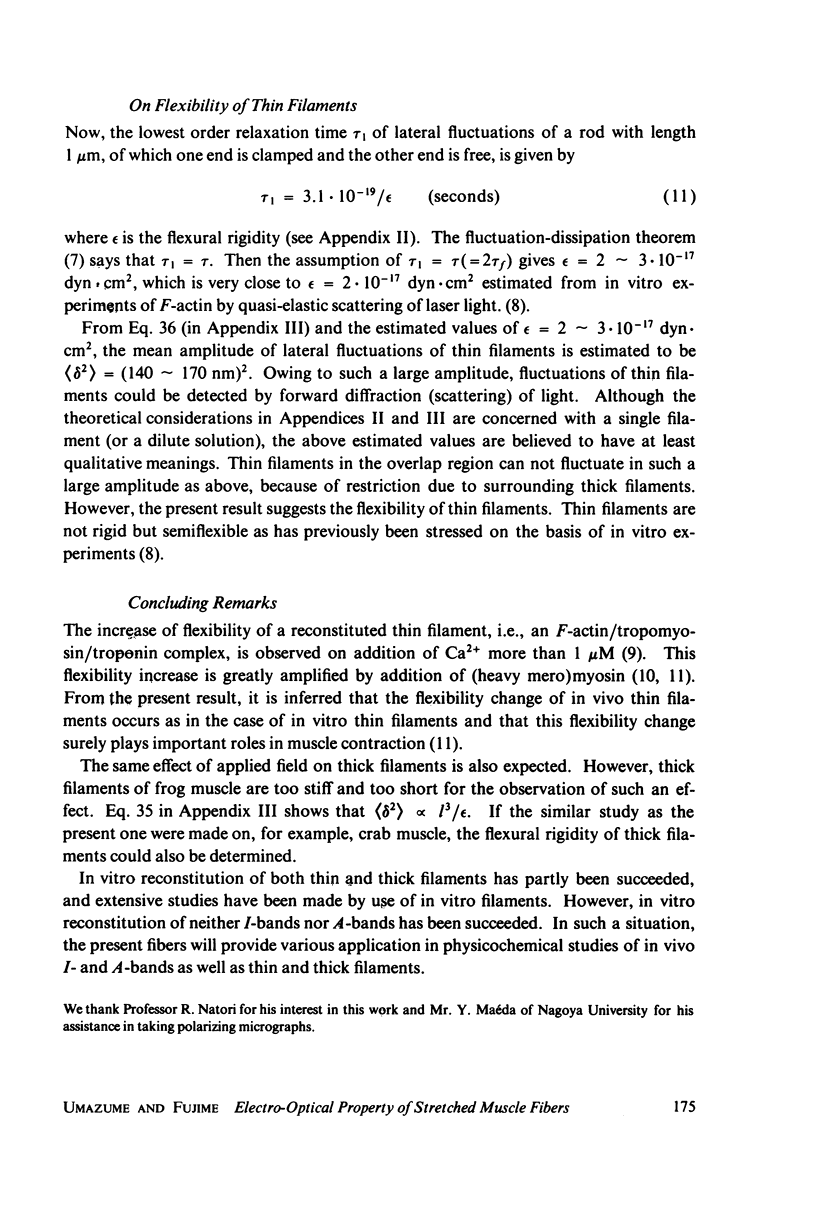
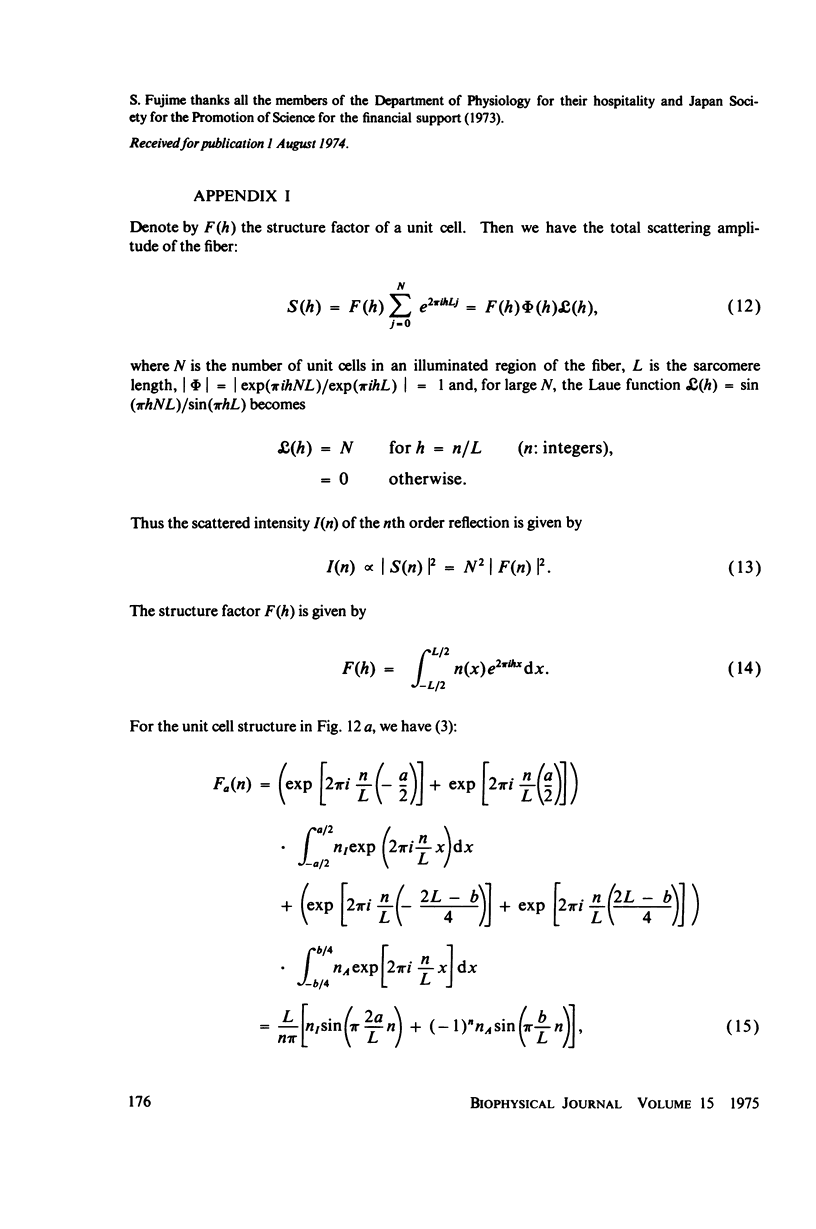
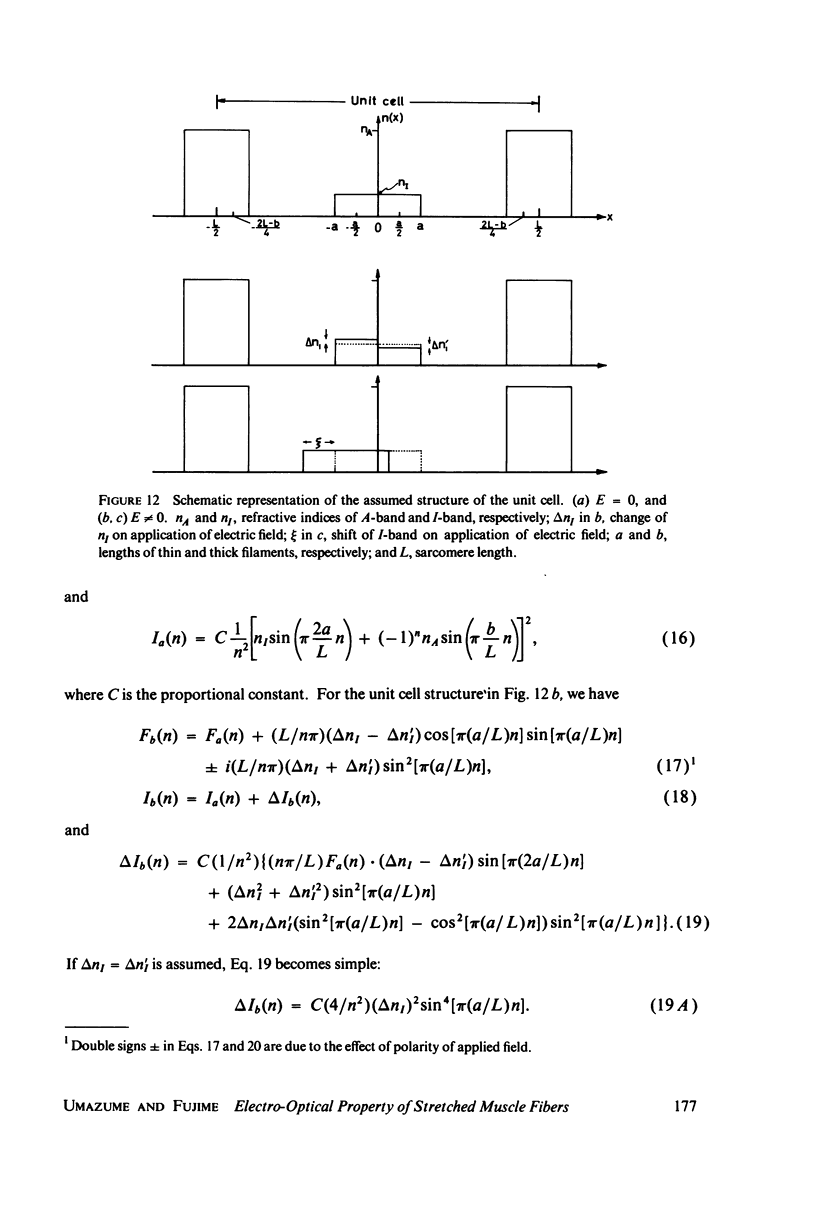
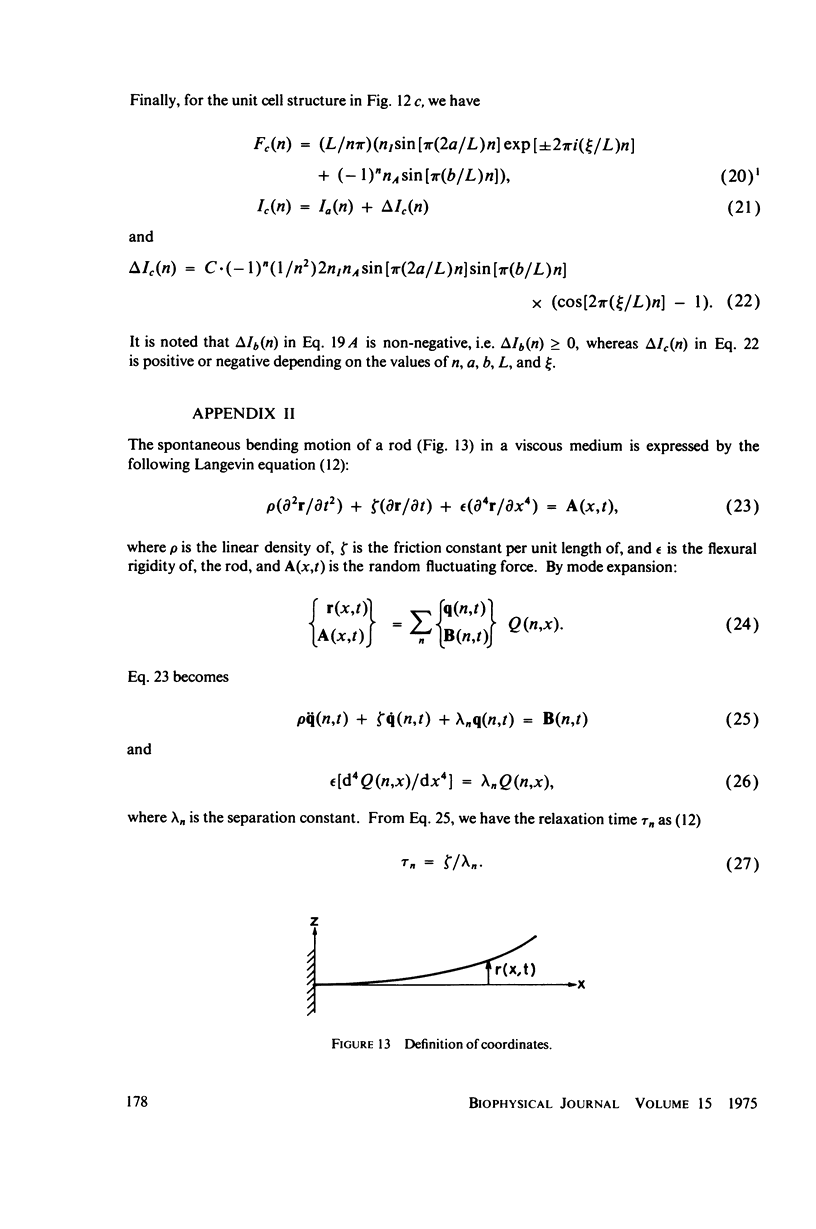
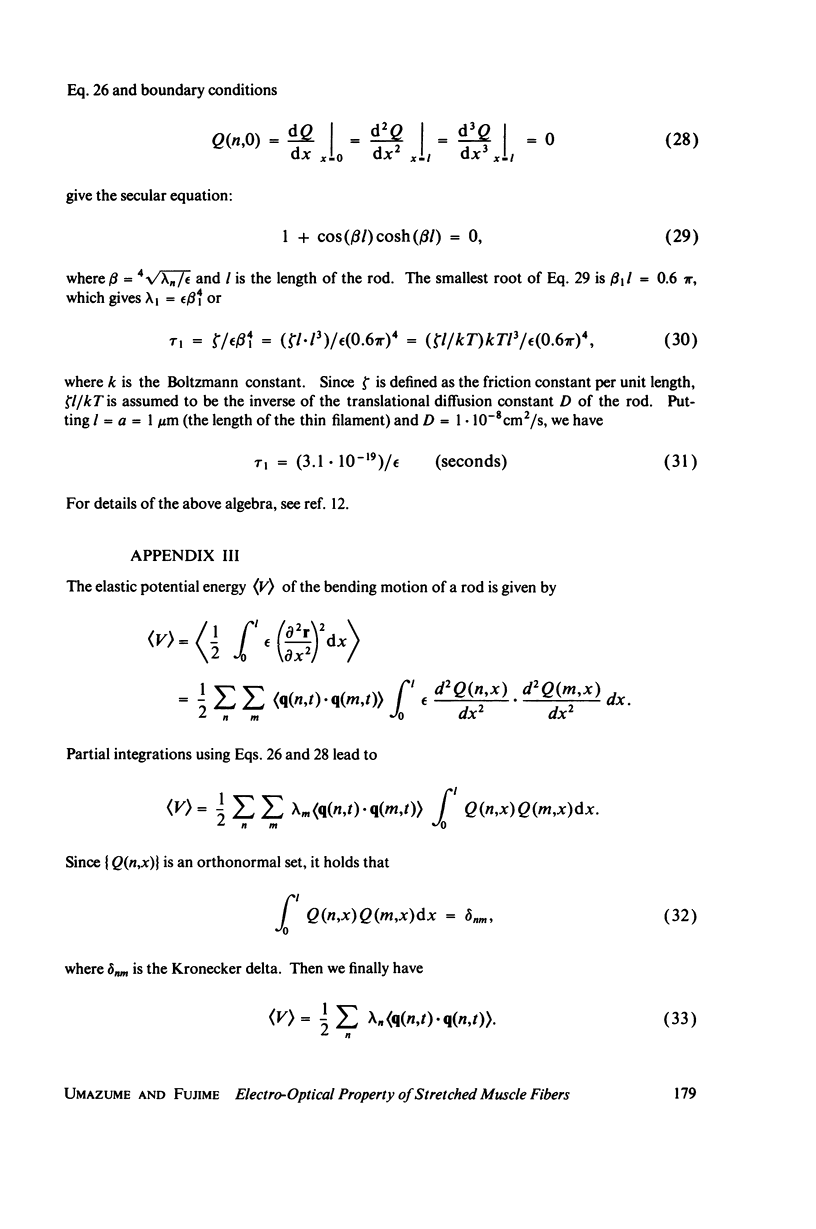
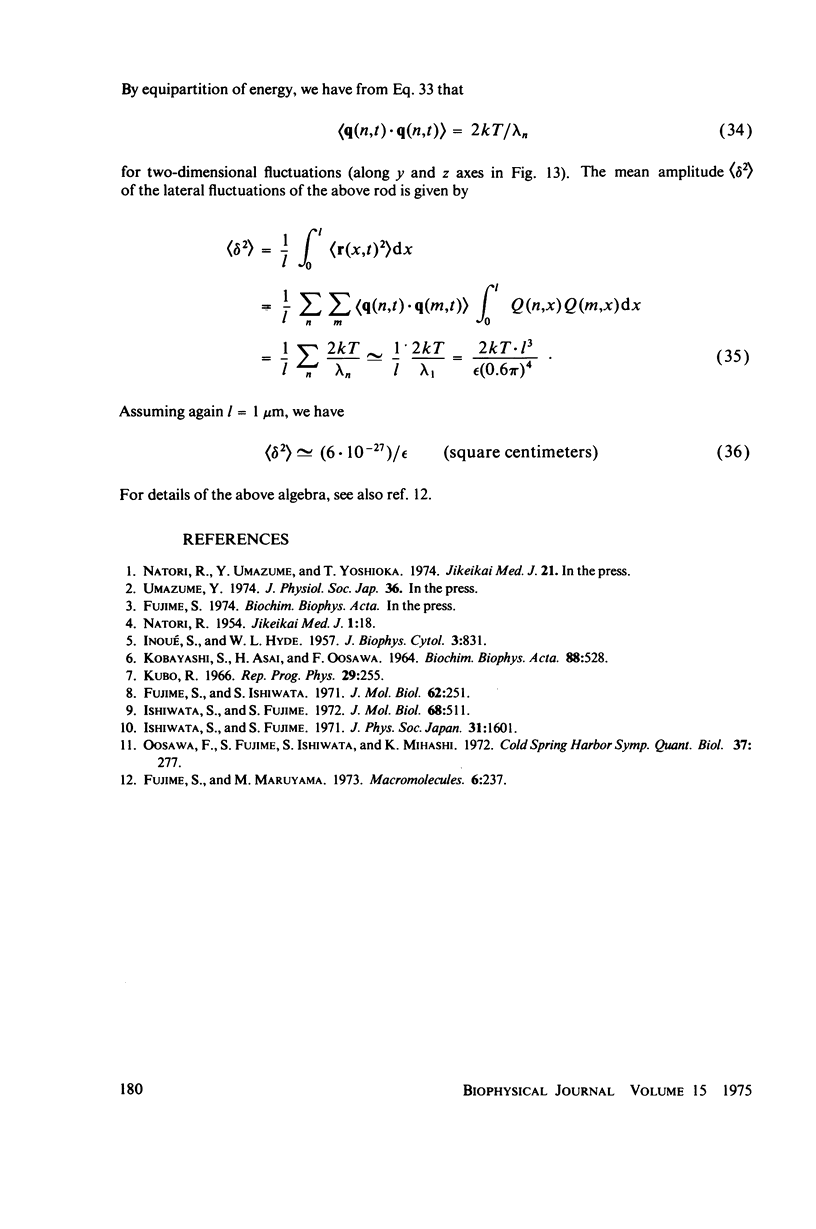
Images in this article
Selected References
These references are in PubMed. This may not be the complete list of references from this article.
- Fujime S., Ishiwata S. Dynamic study of F-actin by quasielastic scattering of laser light. J Mol Biol. 1971 Nov 28;62(1):251–265. doi: 10.1016/0022-2836(71)90144-6. [DOI] [PubMed] [Google Scholar]
- Ishiwata S., Fujime S. Effect of calcium ions on the flexibility of reconstituted thin filaments of muscle studied by quasielastic scattering of laser light. J Mol Biol. 1972 Jul 28;68(3):511–522. doi: 10.1016/0022-2836(72)90103-9. [DOI] [PubMed] [Google Scholar]
- KOBAYASI S., ASAI H., OOSAWA F. ELECTRIC BIREFRINGENCE OF ACTIN. Biochim Biophys Acta. 1964 Nov 29;88:528–540. doi: 10.1016/0926-6577(64)90096-8. [DOI] [PubMed] [Google Scholar]





